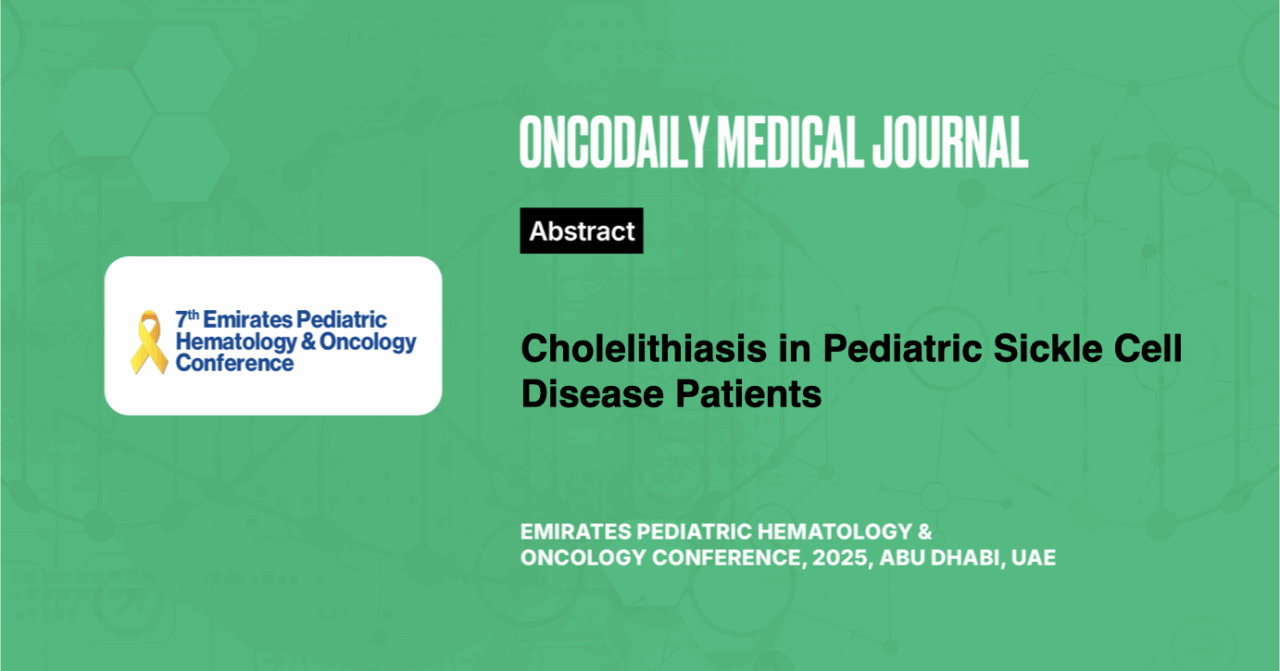Cholelithiasis in Pediatric Sickle Cell Disease Patients
Abstract
Introduction: Sickle cell disease (SCD) is highly prevalent in Saudi Arabia. SCD patients suffer from chronic hemolysis and anemia with cholelithiasis as a common subsequent complication. It can be asymptomatic or complicated. Screening imaging, early diagnosis and evaluation of complications with appropriate treatment increase survival and improve the quality of life. This study aimed to estimate the prevalence of cholelithiasis in pediatric SCD patients at Qatif Health Network, Eastern province, Saudi Arabia, besides determining the effect of age, gender, SCD genotype and phenotype, and laboratory markers, along with corelating the impact of co-inheritance of G6PD deficiency, Hydroxyurea (HU) treatment and Ceftriaxone usage on the development of cholelithiasis.
Methodology: An observational analytic retrospective cross sectional study was performed, following obtaining of acceptance from the local Institutional Review Board. One hundred eight pediatric SCD patients were included, from age of 2 to 14 years, regularly attending pediatric Hematology clinic in the period from January to December 2022. Data was collected using the electronic medical records, including growth parameters, laboratory investigation results, ultrasound findings, and clinical notes.
Results: The prevalence of cholelithiasis was found to be 26.9%, with mean age at radiological diagnosis of 12 years (±2.5 years). Female gender was found to be a significant association for cholelithiasis development with a P-value of (0.038). Total bilirubin level as well as clinical jaundice were of statistically significant P-value (0.01) as an association with cholelithiasis. Splenectomy also showed a statistically significant association with cholelithiasis with P-value of (0.027). SCD genotype variability, HbS%, Hb level, MCV, platelets, LDH, reticulocytes %, G6PD status, Hydroxyurea treatment and Ceftriaxone usage did not show any statistically significance correlation with the development of cholelithiasis.
Within our limited study population, SCD genotype variability did not show any significance correlation with the development of cholelithiasis, with the majority of patients were homozygous HbSS. Correspondingly, cholelithiasis was found in literature to be more frequent in patients with the homozygous Hb SS. In the present study, it was observed that the mean HbS % exhibited no important correlation, howbeit previous studies proved that patients with higher HbS % have significantly higher incidence of calculi formation.
In contrast to what is expected, Hb level, MCV, platelets, LDH and reticulocytes % exhibited no important correlation with cholelithiasis development, except for the total bilirubin level. The higher the total bilirubin level, the higher the possibility to develop cholelithiasis, as majority of previous studies manifested. Splenectomy was found a significant association, which may indicate development of cholelithiasis in severe complicated phenotype patients. Patients with G6PD deficiency have accelerated RBCs turnover, but the present study showed no significant association.
The effect of HU remains controversial in literature. As the main mechanism of hydroxyurea is to increase fetal hemoglobin and thus less susceptibility for sickling, it is expected that it reduces the risk of cholelithiasis due to reduced production of bilirubin. Conflicting this hypothesis, the present study did not show this proposed effect, though this finding is really limited by ignorance of the dose, the patient’s compliance and the duration of treatment since initiation. Ceftriaxone is considered to be a safe drug and commonly used, however it can induce biliary sludge and cholelithiasis.
The present study showed statistically insignificant association. Prophylactic Cholecystectomy for patients with asymptomatic gallstones remains an area of debate. In this study, 13 (39.3%) patients with cholelithiasis underwent laparoscopic cholecystectomy without significant post-operative morbidity or mortality. This study was limited by the small study population and lack of detailed clinical documentations. A larger study population is encouraged including detailed clinical correlated factors for better assessment of association and outcome.
Conclusion: The prevalence of cholelithiasis in the study among pediatric SCD patients was significant, manifested in the majority of patients with clinical jaundice and elevated total bilirubin level. Clinical, laboratory indicators and routine radiological screening are essential for optimal care through early diagnosis and preventing complications, keeping an appropriate clinical decision for surgical interventions.





